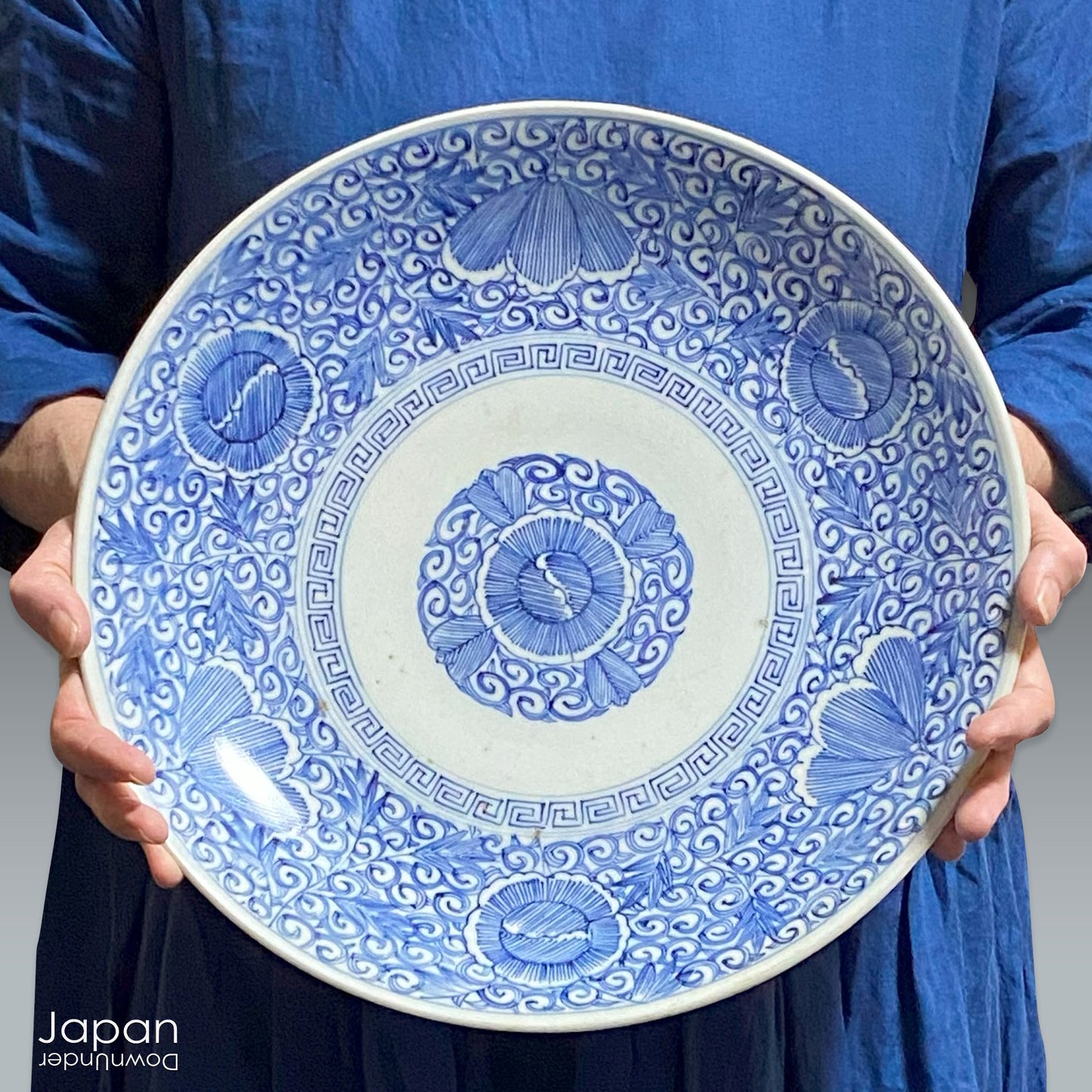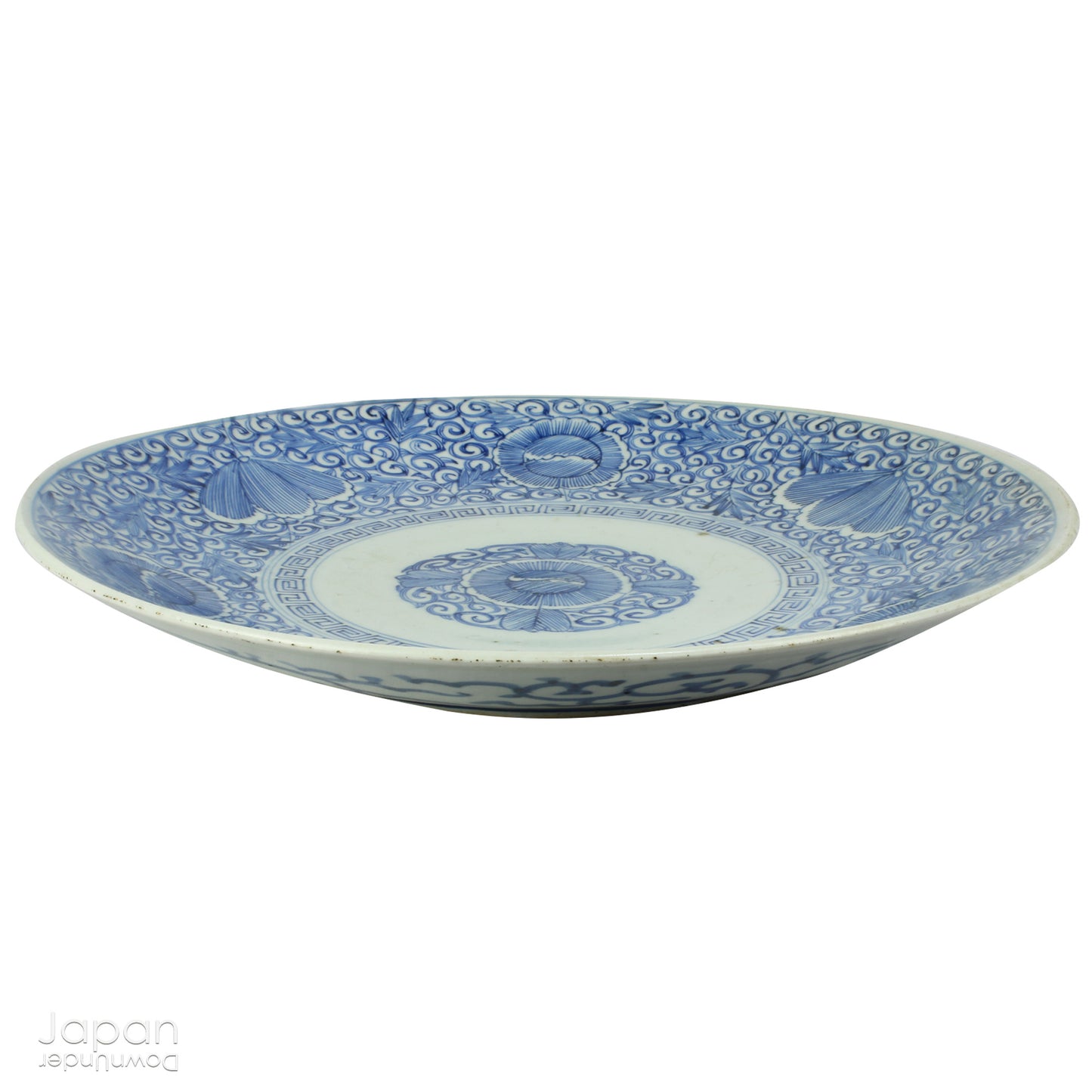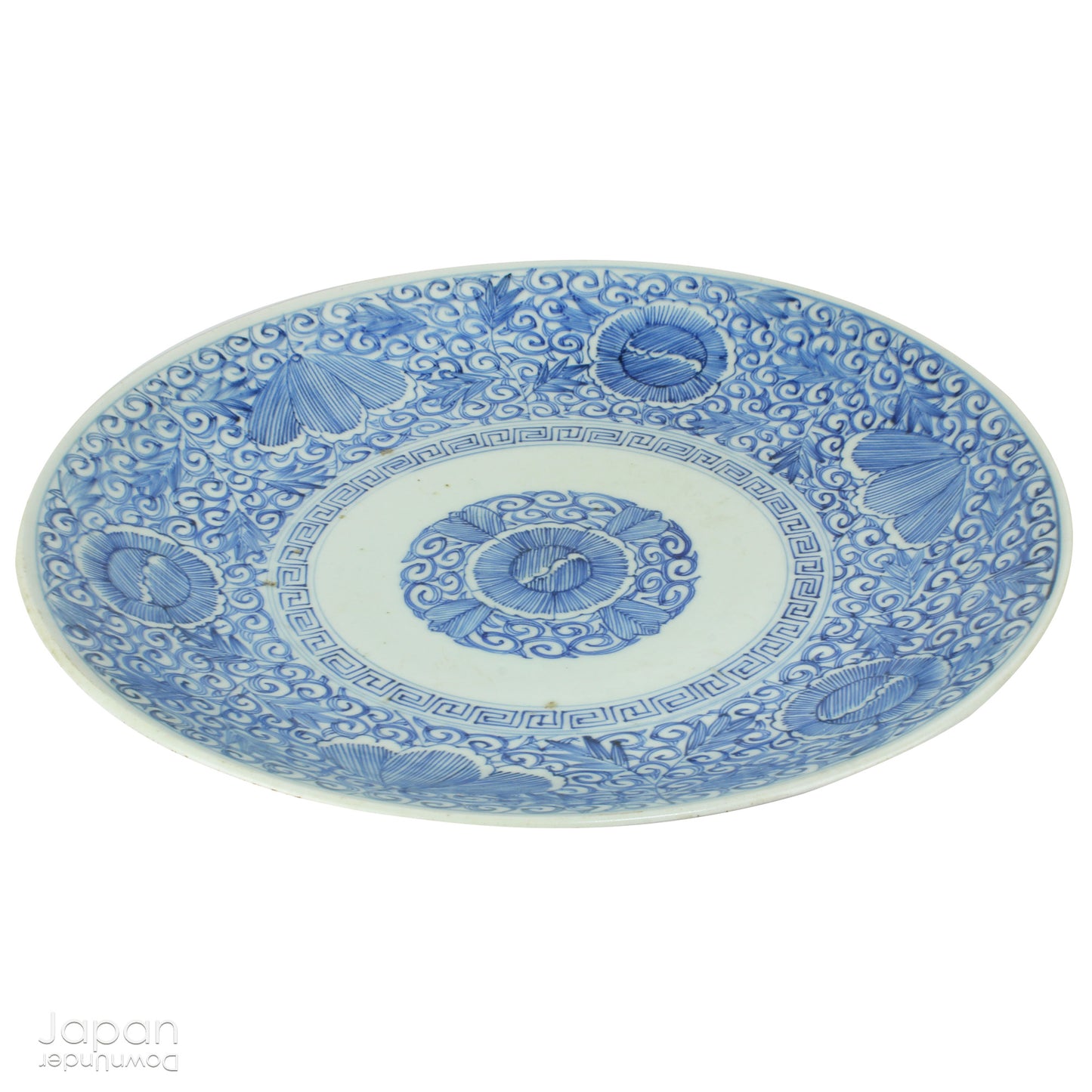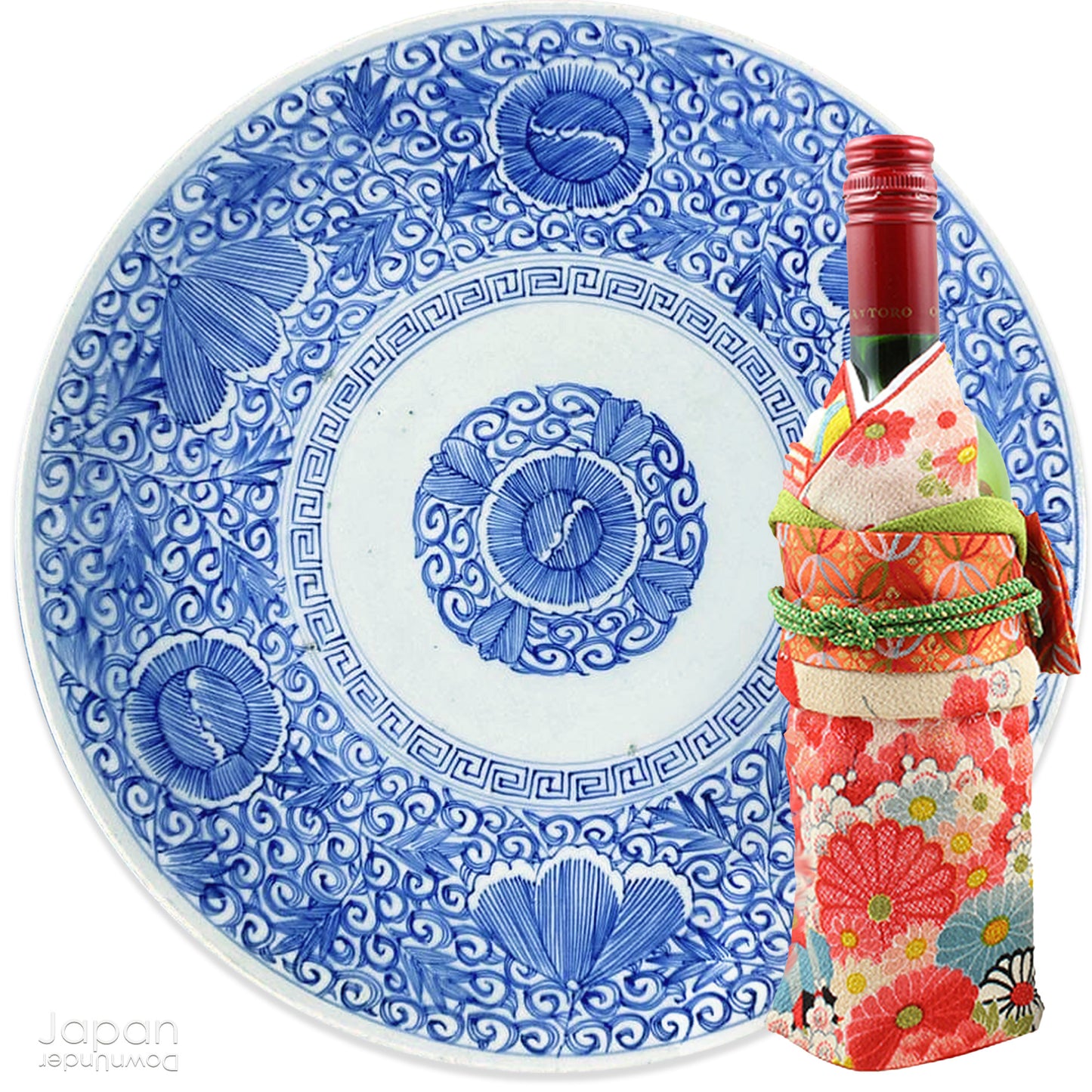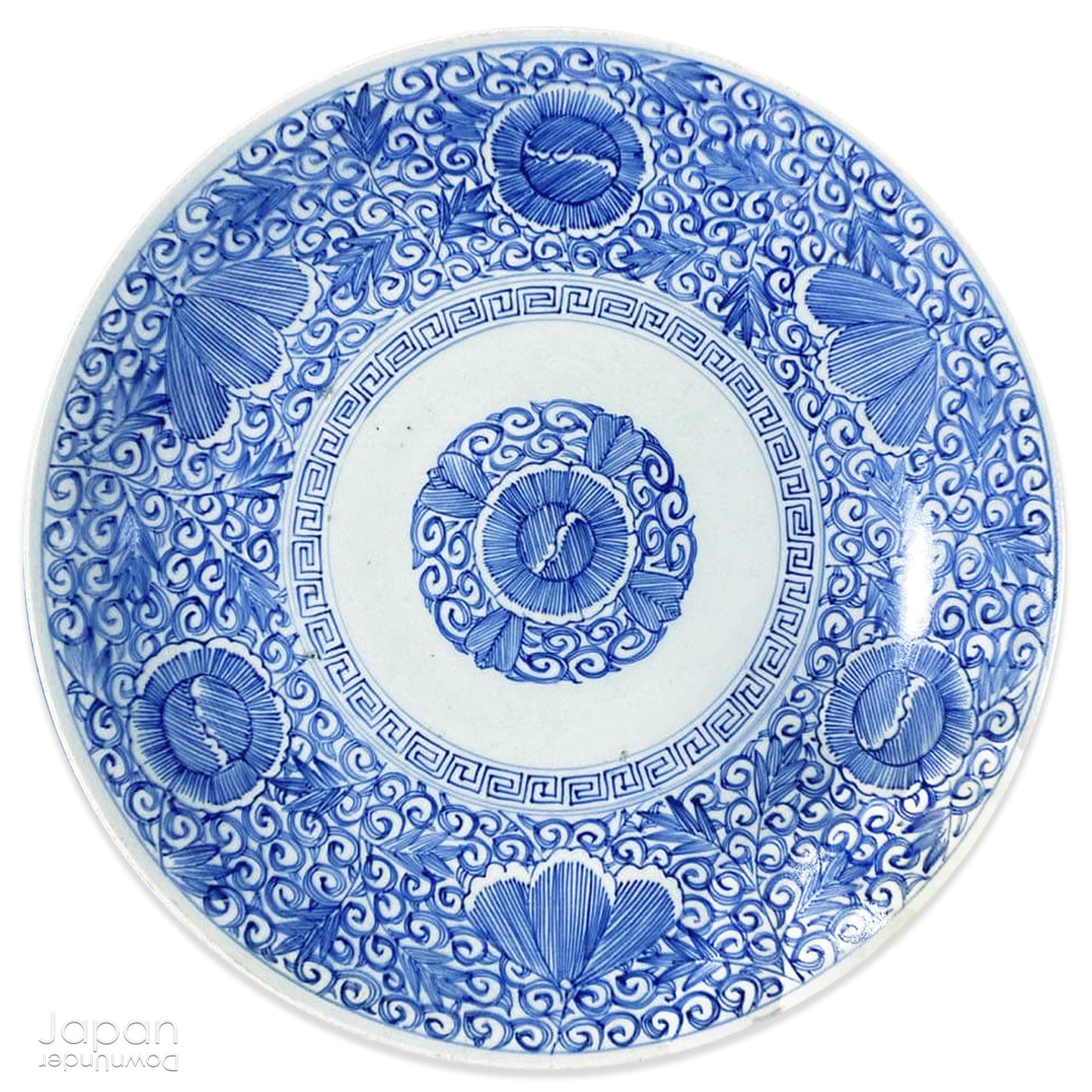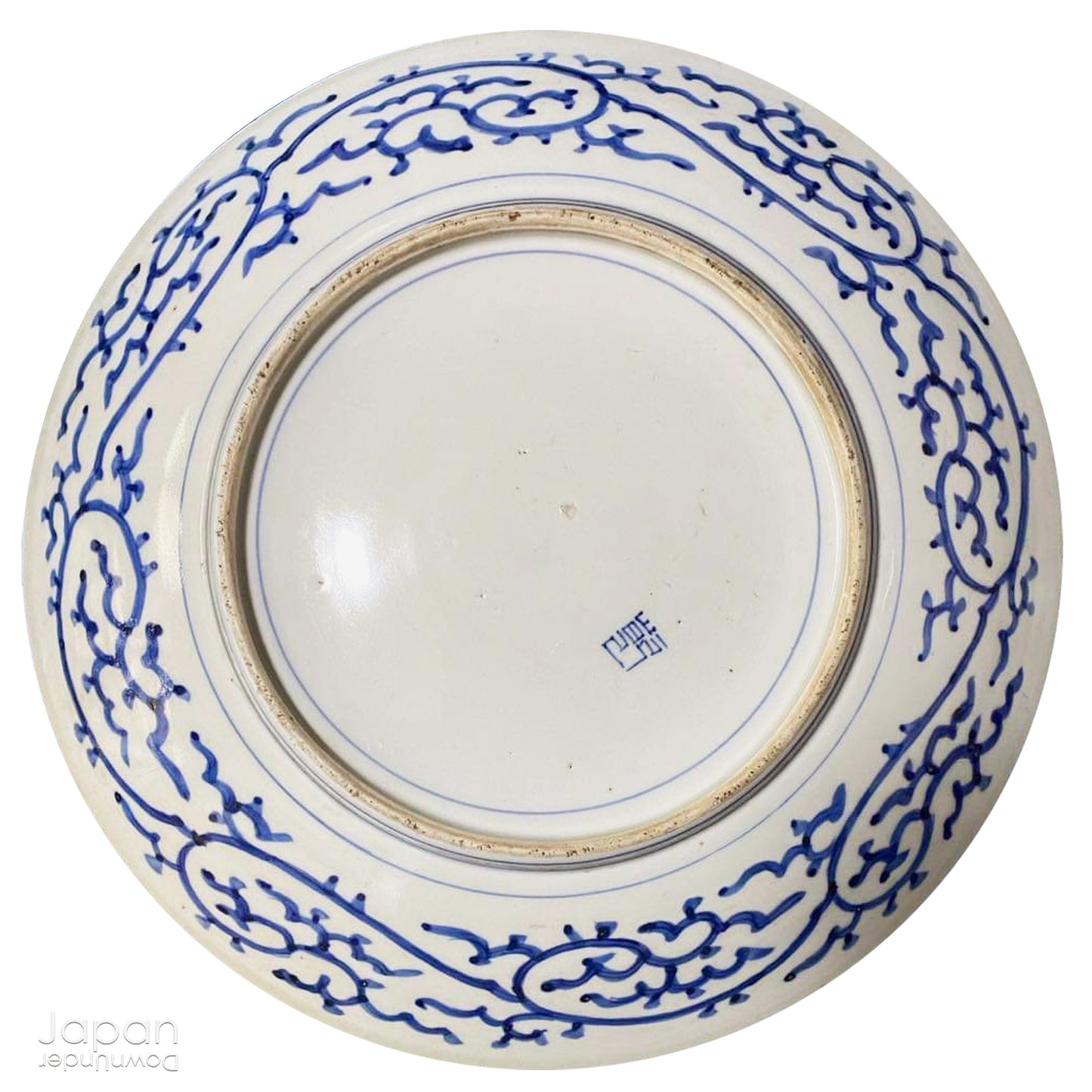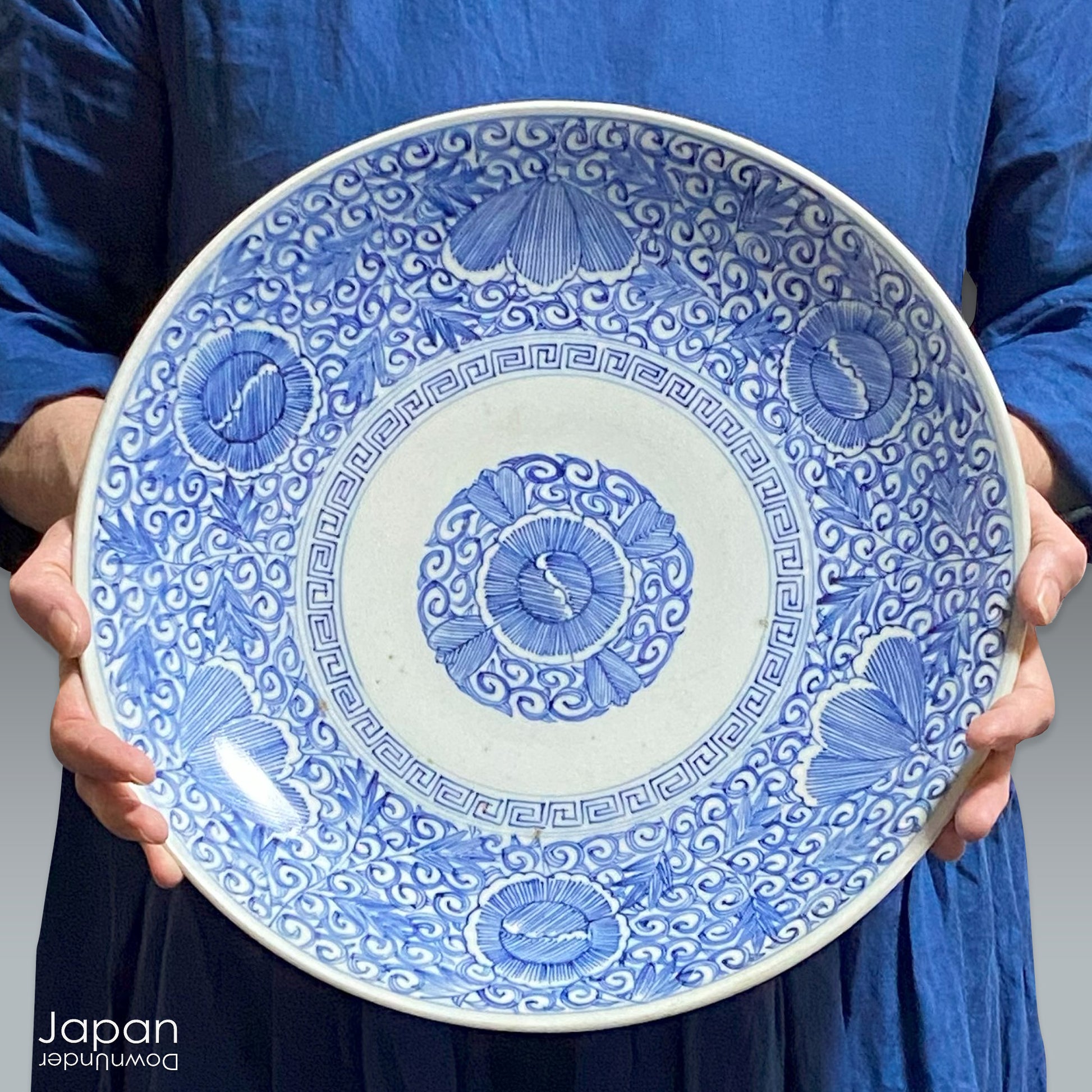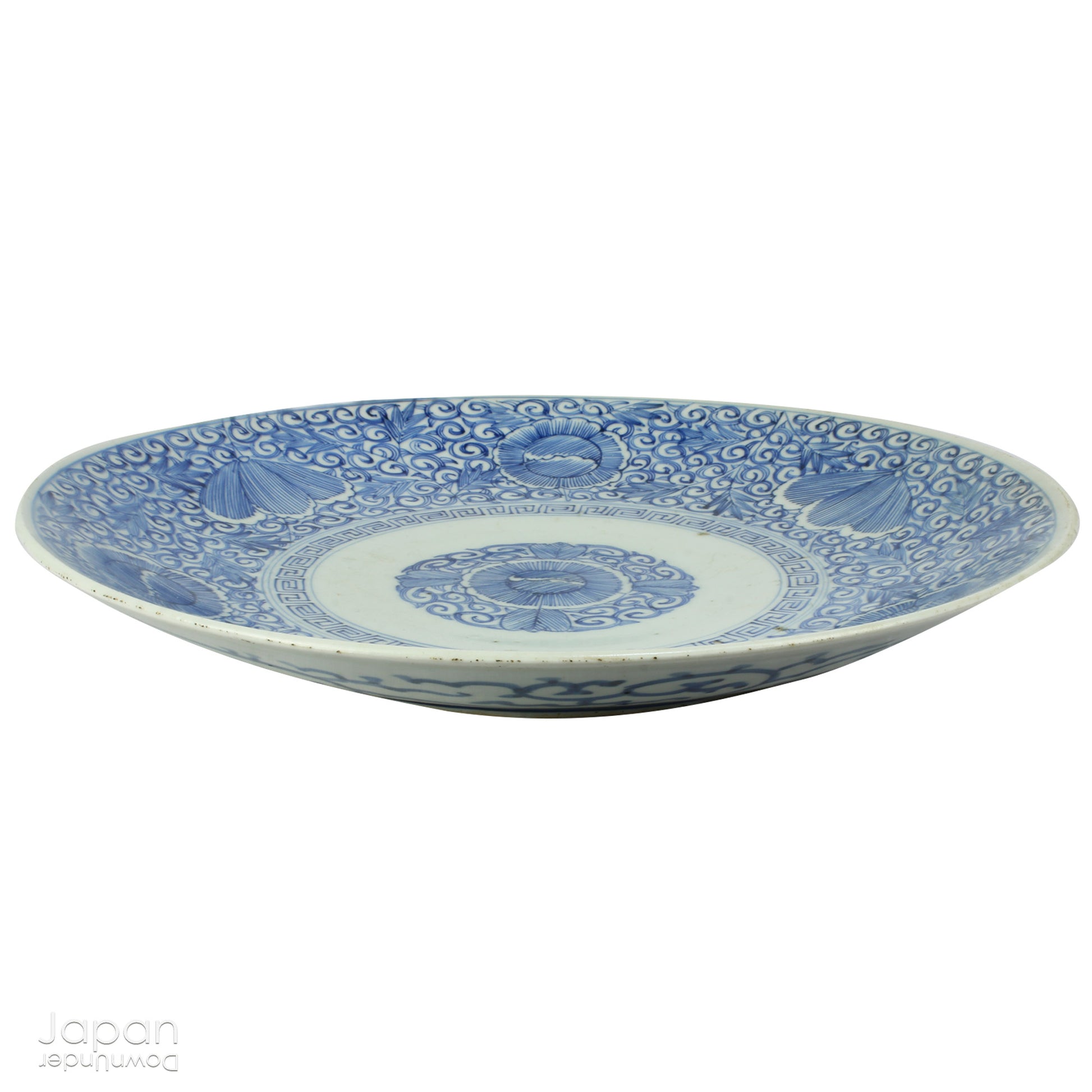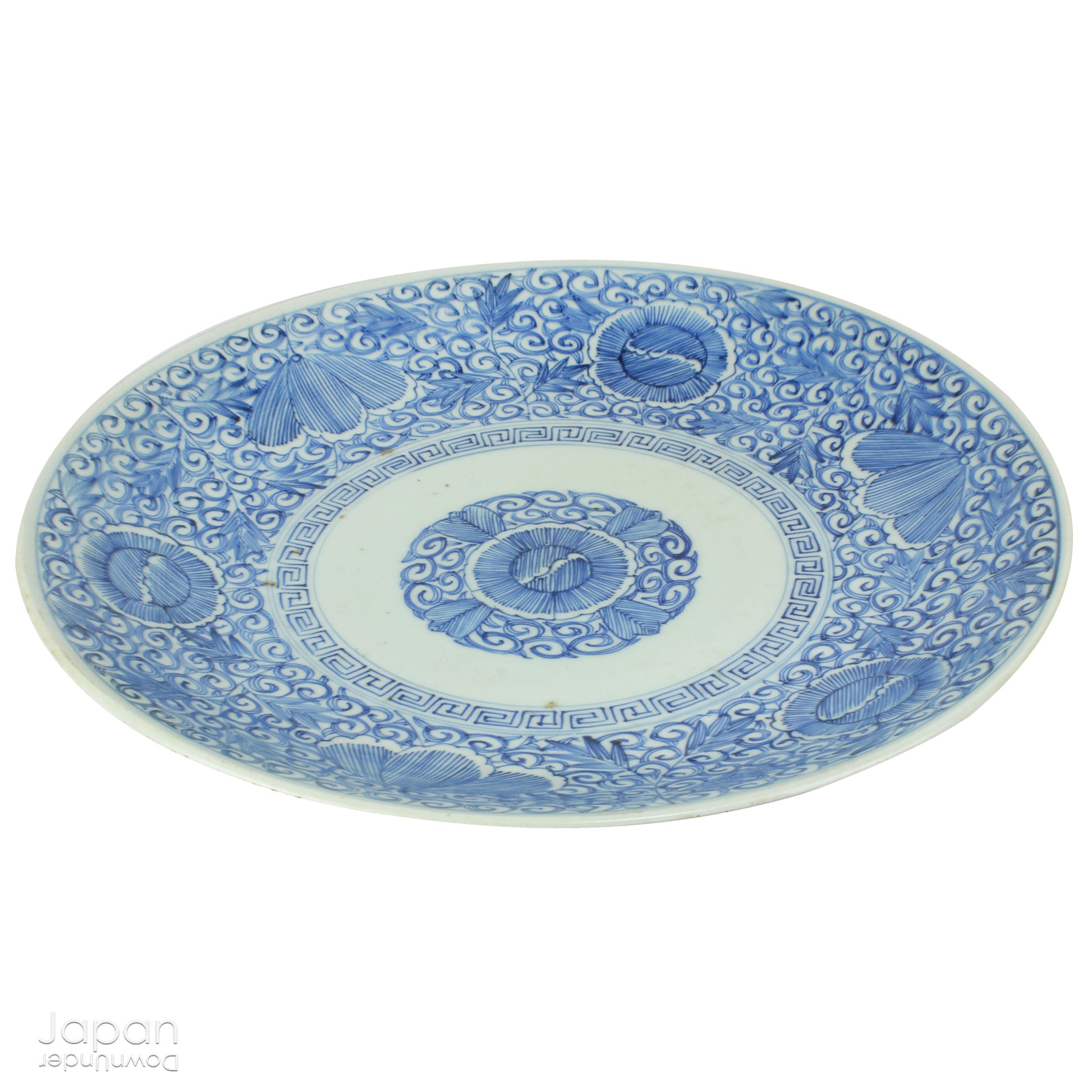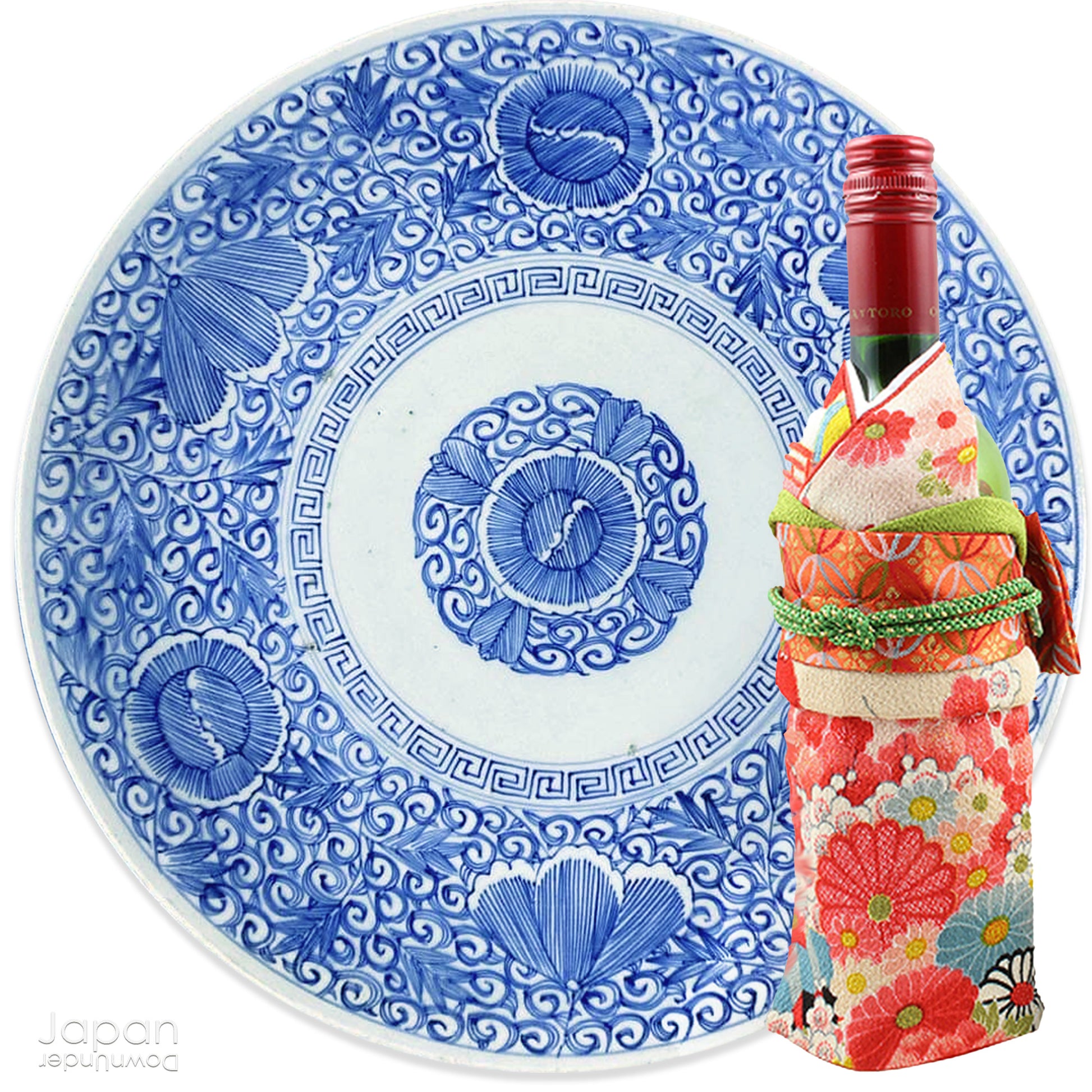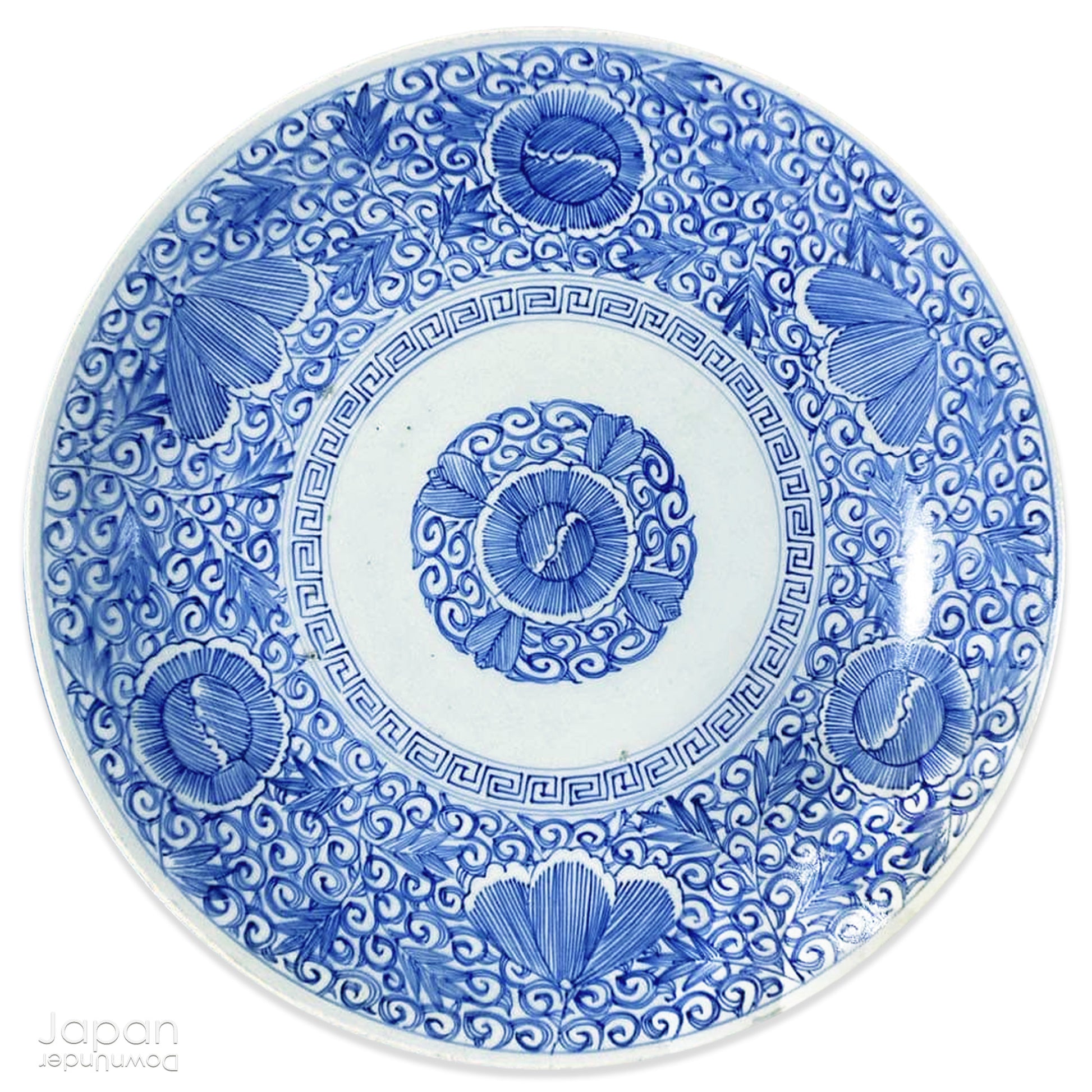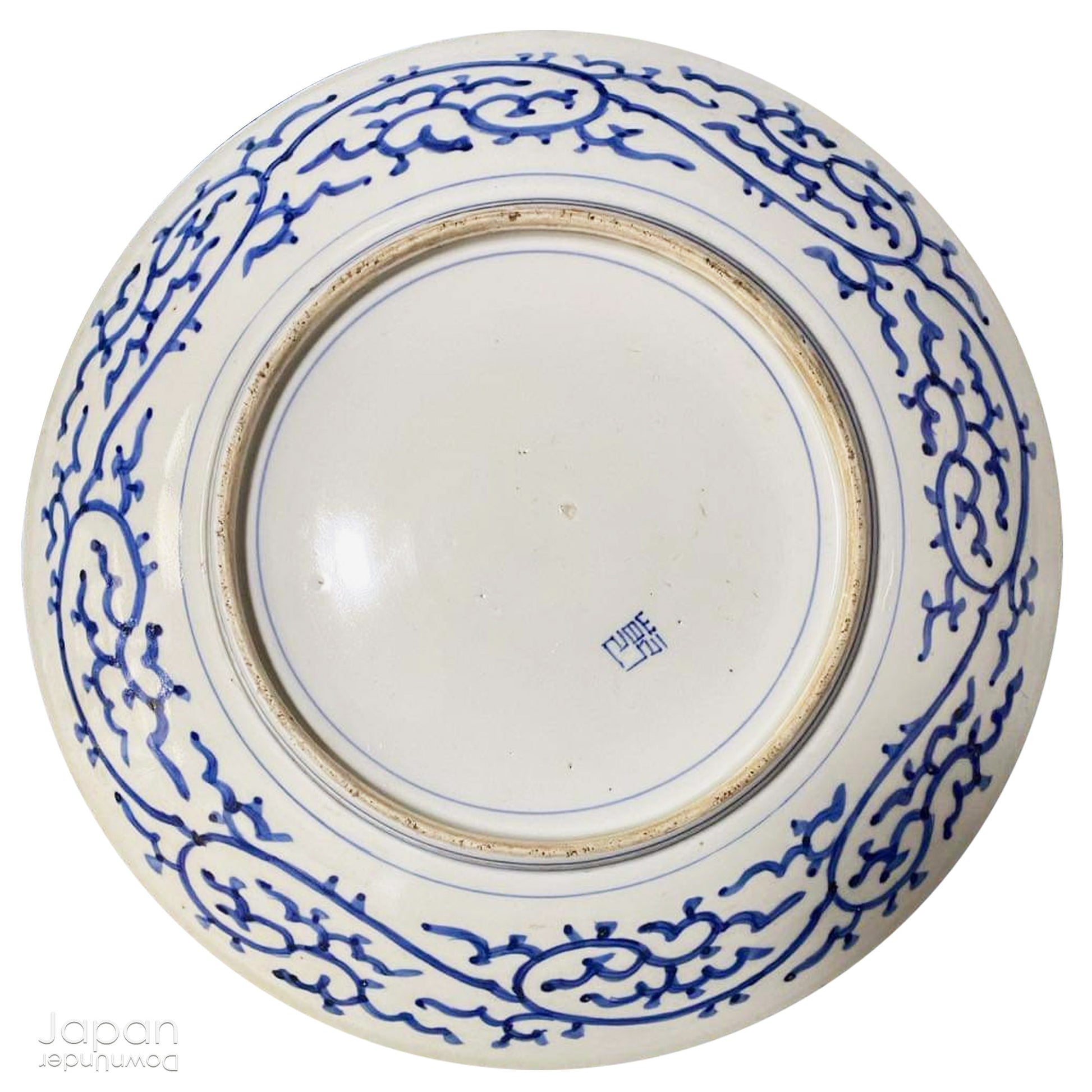JapanDownUnder
antique blue and white imari plate with vine leaf design
antique blue and white imari plate with vine leaf design
Couldn't load pickup availability
Love Japanese Style Like We Do
Transport yourself to the elegance of the Meiji era with this exquisite antique blue and white serving plate. Featuring an intricate karakusa (lucky vine) design, this stunning Imari plate will undoubtedly captivate any admirer of Japanese porcelain artistry. A perfect addition for collectors, it not only adds a touch of history and sophistication to your space, but also serves as a stylish way to present your favorite dishes.
In traditional Japanese dining, large plates, or ozara, were designed to hold multiple servings, allowing family or guests to share dishes. Large plates were often chosen to enable the presentation of food in a visually appealing way.
The elegant karakusa pattern features intertwining vines and leaves in graceful, curving lines, often adorned with flowers and fruits. On this particular plate, the design showcases peonies and ginkgo leaves intertwined with vine leaves. Each of these elements carries significant meaning: vine leaves symbolize longevity, prosperity, and the strength to overcome obstacles, while the entwined design speaks to the interconnectedness of family. Peonies are a symbol of good luck, and ginkgo leaves represent happiness and ever-expanding good fortune.
This plate is elevated on a slight rim, which helps keep the heat of the food away from the surface it rests on. The maker’s seal is visible on the base, adding to its authenticity. With its high curved sides, this plate would have been ideal for serving nimono vegetables, seasonal dishes, or other foods cooked in a flavorful soy-based broth. The sides are beautifully decorated with the same karakusa design, completing the look.
While the plate shows some minor pits and glaze marks from the firing process - characteristic of antique porcelain - these imperfections do not detract from its charm and authenticity.
Not only a stunning decorative piece but also one rich in traditional, auspicious meaning. This plate is a true celebration of Japanese culture and craftsmanship.
- measures 35 cm (13.8”) in diameter x 5 cm (2”) tall.
- weighs 1,600 gm
SHIPPING INFORMATION
- please read our shipping notes in shipping policy.
- we use recycle packaging wherever possible and wrap for safety, rather than appearance!
ABOUT OUR VINTAGE, ANTIQUE AND OTHER ITEMS
We list pieces we feel are worthy of display. There may be scratches, dents, fading and signs of wear and tear. We try to explain the condition of each item exactly, but may miss something.
Information regarding the item and it’s age is obtained from dealers and our personal research. We do our best to give you the correct information but please be aware that we cannot guarantee this information.
Please message us prior to purchase with any questions you may have about our products.
KARAKUSA
In Japan, Karakusa is considered to be a lucky pattern as it features a strong vine with no breaks. This means that if something bad happens, it can be overcome. The vines stretching in all directions also symbolize longevity and prosperity. An item with a Karakusa pattern on it is considered to be a good house warming gift or wedding present.
The karakusa pattern weaves a captivating narrative of intertwining vines, leaves, and floral motifs, evoking a sense of natural beauty and harmony. Originating from ancient Egypt, Greece, and Rome, where it drew inspiration from palm leaf, lotus, and acanthus motifs, the karakusa pattern made its way to Japan from China through the Silk Road. The name "karakusa" itself reflects the pattern's origins, with "kara" meaning China and "kusa" referring to plants.
The karakusa pattern is commonly associated with kimono, obi and tableware. It is also used as a design on furoshiki, a patterned piece of cloth to wrap or carry goods. Karakusa-patterned furoshiki are infamously connected to thieves. In the past, these furoshiki were very common, with many families owning at least one. Burglars would take advantage of this widespread use by using any furoshiki they found in a house to wrap up stolen items and carry them away. Because karakusa-patterned furoshiki were so ubiquitous, they became linked with the image of burglars using them in their crimes.
PEONY
Peony (botan) treees were imported to Japan by Buddhist monks around the 8th century. At that time the peony tree was not regarded as a beautiful garden plant but rather as a medicinal plant. Over the next few hundred years, peonies were appreciated more as ornamental plants and were planted in court gardens and temples. Around the Edo period (1603 to 1868), the cultivation of peony trees became widespread. By the 1890's several large nurseries began to appear in Japan and they started to export large amounts of peony to the United States and Europe.
The flower of the peony tree is known as the "King of Flowers". In Japan, it is a symbol of good luck, honor, bravery and ageless beauty. Sometimes peony flowers are used to decorate wedding halls to promote good luck and good fortune for newlyweds It is a popular flower in tattoos and has a happy-go-lucky, casual devil-may-care meaning.
Peony flowers were used as a common motif in a range of traditional Japanese art forms. They were used in Japanese Ukiyo-e (woodblock prints) and in silk screening on materials such as silk and paper.
GINKO LEAF
A ginko leaf represents happiness and ever-expanding good fortune. Ginko's fan-shaped leaves are thought to demonstrate the ever-widening future spreading out before us. Along with its singular beauty, the ginko is also a symbol of longevity and endurance. The tree can live for a thousand years and thanks to it’s deep roots, the trees survived the atomic blast in Hiroshima. With time, new buds appeared on the burned trunks and the trees became a symbol of hope in Japan.
IMARI WARE / ARITA WARE
Arita ware is the general name of the porcelain made in the Arita area in Hizen Province. Arita ware was sold via the port in Imari, so it was also referred to as Imari ware.
Arita became a center for porcelain due to its proximity to kaolin-rich Mt. Izumiyama. Imari ware took it’s design cues from colorful Japanese textiles, exotic landscapes, gnarled trees, long-winged birds like cranes, and pictures of courtesans in exquisitely detailed kimonos.
Porcelain manufacturing soon became a major industry in the region, due to the protection and strict monopoly policies of the Saga fief. Arita ware was shipped throughout the country and widely exported from the port of Imari by the Dutch East India Company to other parts of the world. Later, porcelain production spread to other parts of Japan.
While Arita ware was often associated with blue-and-white pottery, the Korean-influenced Imari pieces were typically underglazed in blue to define areas filled in later with colored glazes fired at lower temperatures. Thus, blue was primarily used to create borders and backgrounds, although it was also painted on vases, tureens, plates, and lidded jars to depict leaves and other floral elements.
The most frequent Imari palette revolved around three main colors—the blue underglaze, plus a rusty reddish-orange and a brilliant gold. The popularity of this trio led to countless imitations in the West.
In its formative period, Arita ware was affected by the impetus of Korean craftsmen and by the popularity of Chinese ware, but by the mid-17th century, native Japanese designs began to predominate, especially in the development of such overglaze enameled wares as Nabeshima, Kakiemon, and Ko Imari.
Share
